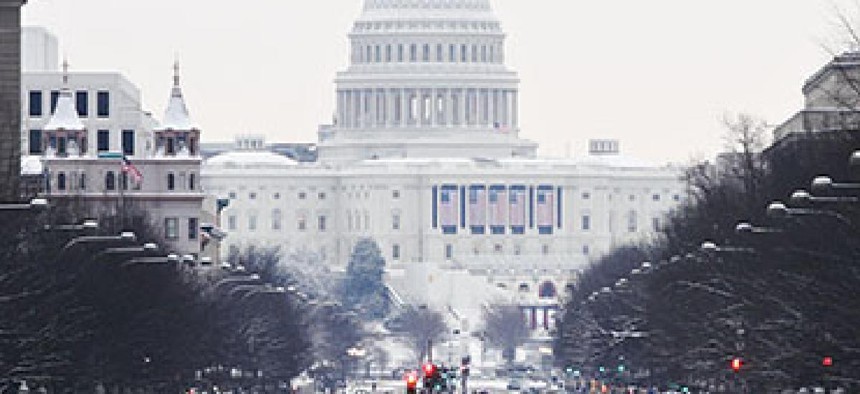End of (snow) days

The widespread use of teleworking has all but spelled the demise of the sleepy snow day.

(Image: Fstockfoto / Shutterstock)
As the D.C. area buckles down for another winter storm, it might be time to bid a fond farewell to those days of sleeping with your pajamas inside out, putting a spoon in the freezer, and watching the morning news ticker in anticipation of a day off from work.
Technology is making snow days for federal employees all but obsolete.
In years past, when the government closed its offices because of a weather-related emergency, the day was considered a "non-workday." Now, even when the government is officially closed, most federal agencies continue to operate because so many employees can telework.
"Technology has really changed what was previously known as the 'take a break' snow day," Danette Campbell, director of the Telework Program Office at the U.S. Patent and Trademark Office, told FCW. "Thanks to laptops, high speed broadband and increased mobility, our employees today have the technological capabilities to be effective outside of the office."
USPTO has been a leader in telework since the 2010 Telework Enhancement Act -- 9,892 employees of its nearly 13,000 are teleworking on any given day.
This notion of the disappearing snow day can’t be understood without understanding the different types of teleworkers in the federal government.
When federal offices are closed due to weather, OPM’s operating status announcement requires two types of telework-ready employees to be working that day, but there is also a third group that comes into play.
The first category is employees already scheduled to telework that day. The second is employees whose written telework agreement requires them to telework when the government is closed.
The third category of teleworkers are those who are telework-ready but are neither scheduled to work on the day of an OPM closure announcement or required to work on that day according to their written telework agreement.
OPM's December 2014 D.C. Area Dismissal and Closure Procedures report said that agencies should move toward a telework policy that incorporates that third category of employees, which may be the largest category of telework employees, into the second category which would require them to telework on days when the federal government is closed.
That means the number of employees who have telework agreements but didn’t necessarily have to work on days of government closures is going to start to dwindle.
The tipping point for telework in times of bad weather was in 2010 when "Snowmageddon" hit D.C., resulting in almost a full week of government closures.
"It really set the new norm that agencies' continuity of operations programs have to be connected in some capacity to telework," Campbell said. "Closing down was not an option for stakeholders and it's not an option anymore."
Campbell said the potential of teleworking was fully realized during that week, as previously scheduled meetings successfully turned into conference calls and many agencies carried on “business as usual.”
But another question deserves to be raised — how much work is actually being done on telework days?
According to a survey by Intercall, a conference technology provider, seven out of 10 respondents said they are as productive or more productive when working from home. A Stanford University study also found that employees working from home are 13 percent more productive.
Campbell said the key to having consistent productivity on days when employees are all teleworking is by establishing clear expectations and responsibilities. Supervisors should discuss work schedule, collaboration tools and applications and communication ahead of time -- before bad weather strikes.
All employees who have a telework agreement at USPTO must undergo IT and non-IT training, which involves, among other things, employees and supervisors learning how to effectively conduct teleconferences.
"Employees know exactly what to do, they practice," Campbell said. "here's really no learning curve when we have an inclement weather incident."
NEXT STORY: Levine tapped for DCMO





